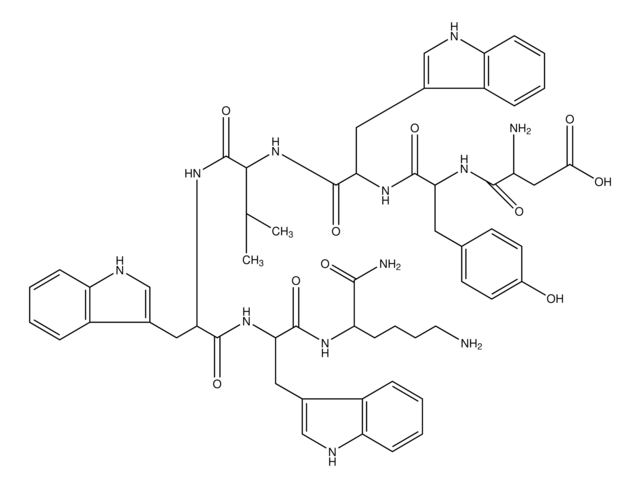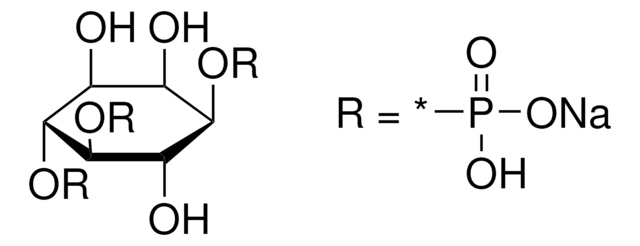G5668
GW1929 hydrate
>98% (HPLC), solid
Synonyme(s) :
N-(2-Benzoylphenyl)-O-[2-(methyl-2-pyridinylamino)ethyl]-L-tyrosine hydrate
About This Item
Produits recommandés
Niveau de qualité
Pureté
>98% (HPLC)
Forme
solid
Solubilité
DMSO: 20 mg/mL
Auteur
GlaxoSmithKline
Chaîne SMILES
[H]O[H].CN(CCOc1ccc(C[C@H](Nc2ccccc2C(=O)c3ccccc3)C(O)=O)cc1)c4ccccn4
InChI
1S/C30H29N3O4.H2O/c1-33(28-13-7-8-18-31-28)19-20-37-24-16-14-22(15-17-24)21-27(30(35)36)32-26-12-6-5-11-25(26)29(34)23-9-3-2-4-10-23;/h2-18,27,32H,19-21H2,1H3,(H,35,36);1H2/t27-;/m0./s1
Clé InChI
XSITZVFUXCLFMK-YCBFMBTMSA-N
Informations sur le gène
human ... PPARG(5468)
Application
- to study its effects on plant homeodomain finger protein 16 (Phf16) and patatin-like phospholipase domain containing 3 (Pnpla3) expression involved in adipogenesis
- to study its effects on complement component 3 (C3) gene expression in human hepatoma cells
- to activate PPARγ in human breast cancer cells
Actions biochimiques/physiologiques
Caractéristiques et avantages
Informations légales
Code de la classe de stockage
11 - Combustible Solids
Classe de danger pour l'eau (WGK)
WGK 3
Point d'éclair (°F)
Not applicable
Point d'éclair (°C)
Not applicable
Équipement de protection individuelle
Eyeshields, Gloves, type N95 (US)
Certificats d'analyse (COA)
Recherchez un Certificats d'analyse (COA) en saisissant le numéro de lot du produit. Les numéros de lot figurent sur l'étiquette du produit après les mots "Lot" ou "Batch".
Déjà en possession de ce produit ?
Retrouvez la documentation relative aux produits que vous avez récemment achetés dans la Bibliothèque de documents.
Notre équipe de scientifiques dispose d'une expérience dans tous les secteurs de la recherche, notamment en sciences de la vie, science des matériaux, synthèse chimique, chromatographie, analyse et dans de nombreux autres domaines..
Contacter notre Service technique







